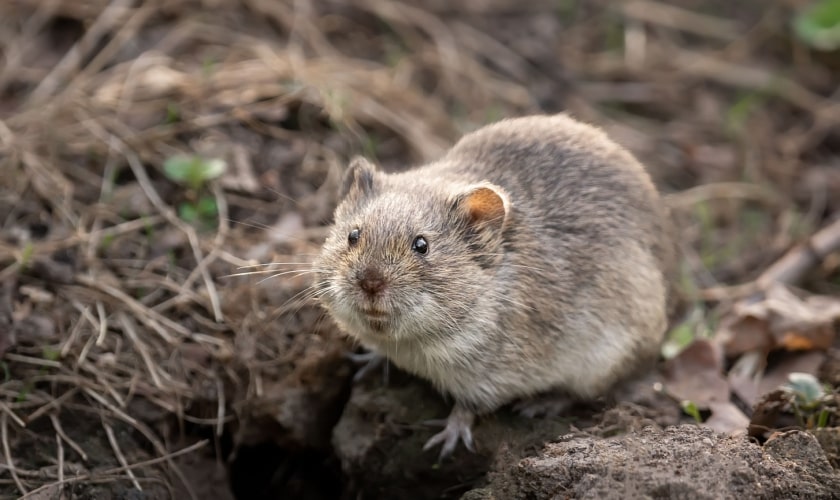Proven Vole Control Methods to Safeguard Your Property
Proven Vole Control Methods to Safeguard Your Property
Blog Article
Comprehensive Guide to Effective Vole Insect Control: Infestation Recognition and Treatment Approaches
In the world of efficient pest control, vole infestations posture an one-of-a-kind difficulty that requires a tactical approach. These tiny rodents, frequently incorrect for computer mice, can ruin yards, lawns, and crops if left unchecked. Identifying the indications of vole existence and implementing targeted therapy techniques are important components of an effective bug administration strategy. By checking out the nuances of vole actions, understanding key signs of invasion, and assessing an array of control alternatives, one can establish an extensive technique to combat these elusive insects.
Recognizing Vole Behavior
Vole behavior is characterized by their delving behaviors and quick reproduction prices, making them a difficult parasite to regulate efficiently. These little rodents normally develop elaborate tunnel systems underground, using them for shelter, food storage, and transportation. Voles are herbivores, taking in a variety of plants, light bulbs, grasses, and roots, which can cause substantial damage to yards, orchards, and grass. Their quick reproductive price more makes complex control efforts, with women efficient in creating several litters in a single year, each having numerous offspring.
Voles are most energetic throughout the morning and night hours, spending the bulk of their time foraging for food. Their tunneling practices not just disrupt lawns and yards but additionally make them challenging to eliminate and detect. Understanding vole behavior is crucial for reliable insect control approaches. By determining their burrow areas, monitoring feeding locations, and implementing targeted control techniques, such as trapping or environment modification, vole invasions can be managed successfully.
Indications of Vole Infestation

Prevention Approaches
Applying reliable avoidance methods is vital in lessening vole invasions and protecting greenery from their damaging feeding habits. To prevent vole problems, it is crucial to begin by getting rid of prospective food sources and shelter.
Frequently inspecting the building for signs of vole task, such as runways and tunnel openings, is essential for very early discovery and prompt action. If vole activity is presumed, take into consideration utilizing repellents or traps tactically placed near their pathways.
Non-Lethal Control Techniques
To successfully take care of vole populaces while prioritizing humane methods, non-lethal control methods supply sensible solutions for decreasing vole damages in landscapes and yards. One reliable approach is making use of physical barriers such as hardware fabric or cable mesh to protect susceptible plants. These barriers can be hidden at least 12 inches deep and bent at a 90-degree angle to stop voles from burrowing beneath. In addition, habitat modification can prevent voles by reducing their chosen food resources and hiding areas. Keeping a well-mowed yard, getting rid of pop over to this site particles, and keeping greenery trimmed can make the atmosphere much less enticing to voles.

Lethal Control Options
One reliable method for resolving vole infestations in landscapes and gardens includes the calculated use of deadly control alternatives. When encountered with a severe vole invasion that non-lethal techniques have fallen short to consist of, carrying out dangerous control procedures ends you can find out more up being essential. Overall, when using deadly control options, it is crucial to do so properly and in accordance with neighborhood policies to successfully handle vole infestations.
Verdict
Finally, effective vole parasite control needs an extensive understanding of vole actions, identification of signs of invasion, implementation of avoidance techniques, and utilization of both lethal and non-lethal control techniques. By combining these strategies, individuals can effectively handle vole populations and shield their property from damages. It is check it out essential to resolve vole infestations without delay to stop further problems and decrease the impact on the surrounding setting.
Given the complex tunnel systems and rapid recreation prices particular of voles, recognizing the indicators of vole invasion comes to be vital in reliable insect control. One of the key indicators of vole existence is the visibility of surface paths or trails in turf or snow, typically about 1-2 inches vast, produced as voles travel in between their burrows and food resources.To successfully take care of vole populaces while focusing on gentle techniques, non-lethal control techniques supply sensible solutions for minimizing vole damages in gardens and landscapes.One efficient method for dealing with vole problems in yards and landscapes entails the strategic usage of dangerous control alternatives. vole pest control.In final thought, efficient vole insect control requires an extensive understanding of vole behavior, identification of indicators of infestation, implementation of prevention strategies, and utilization of both lethal and non-lethal control methods
Report this page